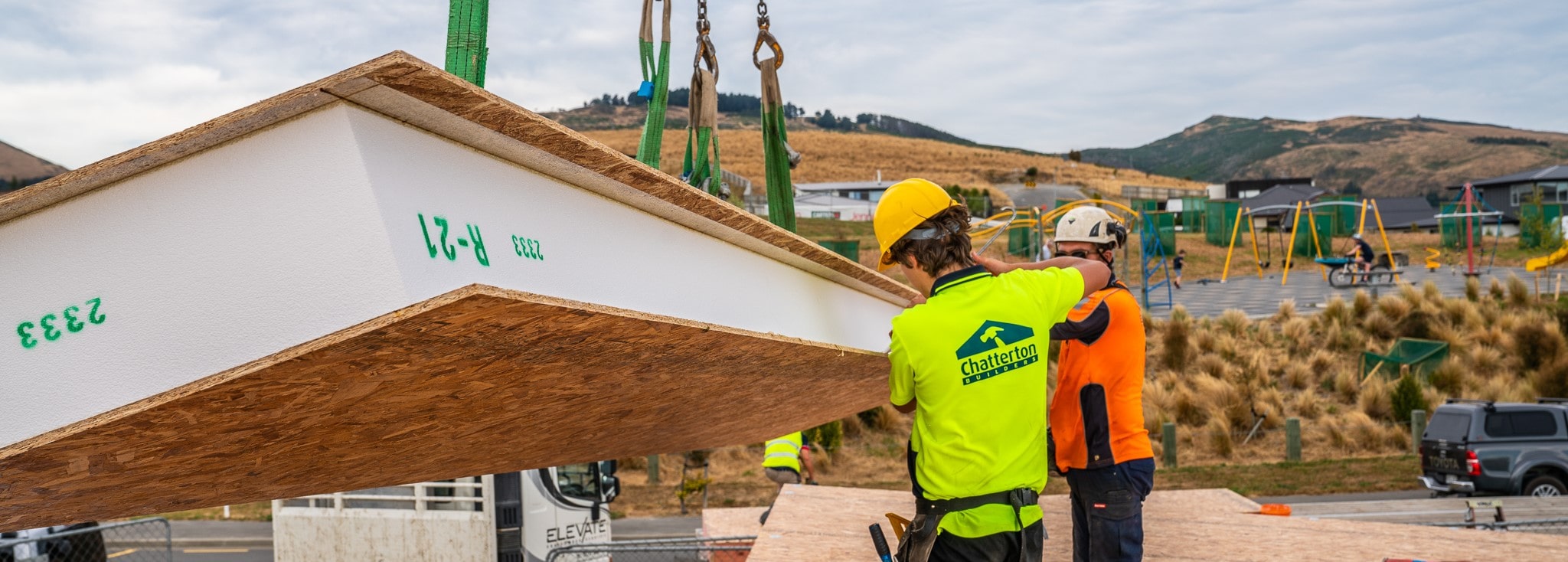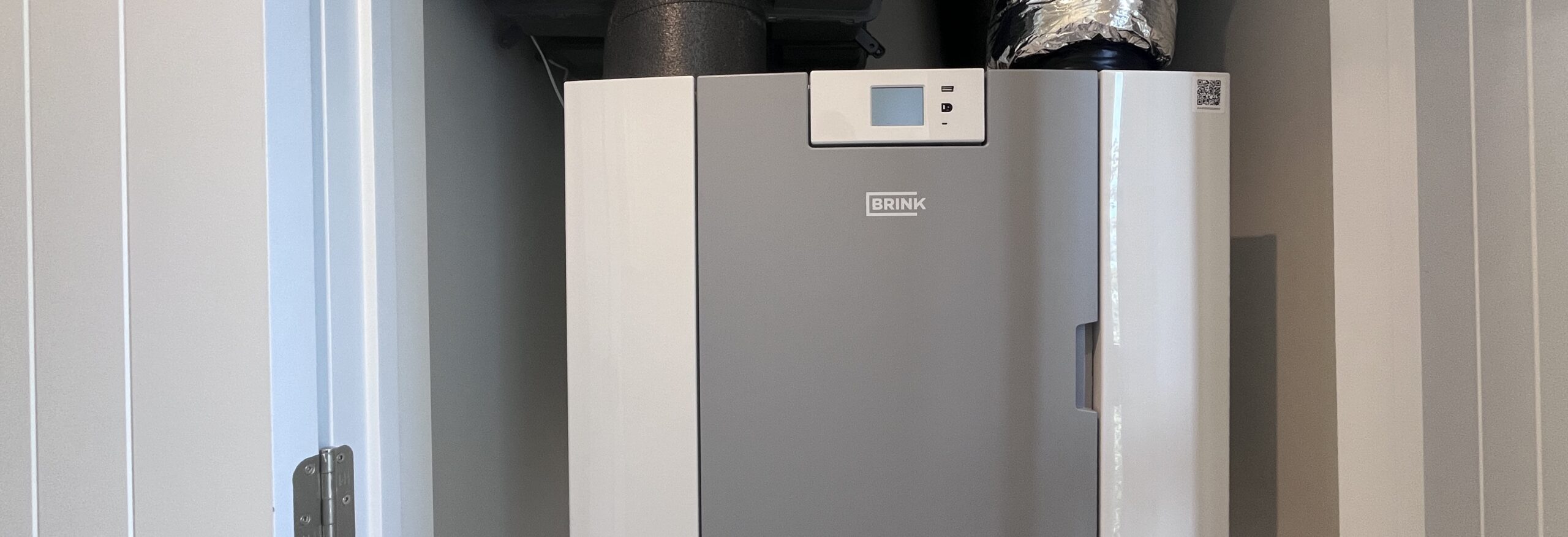In New Zealand, it doesn’t take long to notice mould in many homes, including new ones. Mould is not just an eyesore; it can also pose significant health risks. Fortunately, designing and building homes according to passive house principles can significantly reduce the risk of mould growth.
What Causes Mould?
Mould thrives in areas with persistent moisture and poor ventilation. Moisture in the air can condense when it meets cooler surfaces, leading to damp spots where mould can develop. Thermal bridging across a building envelope produces colder internal surfaces.
Poor ventilation exacerbates the problem by trapping moist air inside, especially in areas with high humidity, cooking, or drying clothes.
A major concern is that mould can start within the building fabric, through interstitial condensation. This begins hidden behind the walls, until it becomes visible and problematic.

Why Are So Many New Homes Developing Mould?
In minimum code-built homes the air and surface temperatures can differ to the extent that when moisture in the air hits colder surfaces it condenses. This commonly occurs around windows and external corners. The problem is more pronounced in steel-frame homes and non-thermally broken aluminium windows because metal is a conductor, creating thermal bridges that lead to condensation. However, timber is also a thermal bridge albeit to a lesser extent, contributing to colder areas of the house.
Large-scale damage is generally not a problem that is solely related to thermal bridges, but they are points where the problems originated in the first place.
Additionally, heightened building practices have led to better air tightness in new homes reducing heat loss and lessening draughts. However, without considering the consequences of restricting air movement home in the design, moisture can become trapped inside. If key principles, like appropriate ventilation, are not incorporated, this can lead to condensation and mould due to more limited air movement.
Dangers of Mould
Mould in a home can cause various health issues, including runny or blocked noses, eye and skin irritation, sneezing, coughing, and wheezing. Allergy sufferers may experience more severe reactions like skin rashes, respiratory infections, and asthma. Long-term exposure to mould is potentially linked to more serious health conditions. It is entirely avoidable when building a new home and should not be overlooked.

How to Get Rid of Mould
Once mould infiltrates your home, complete removal is challenging because visible mould is just a small part of the problem. Most mould grows deep within the walls and spreads through spores in the air. Professional treatment is recommended but may involve chemicals that cause further irritation, and the effectiveness of DIY solutions is limited due to the resistance of the mould spores. The best solution is to avoid mould in the first place by incorporating preventative measures in the design of your home.
How Passive House Design Prevents Mould
- Airtight Construction
Air tightness is optimised in passive homes, helping prevent moisture-laden air from entering the building through gaps and cracks. By controlling air exchange, Passive House designs reduce the likelihood of condensation forming inside the home, one of the primary causes of mould.

- Superior Insulation
High levels of insulation are a cornerstone of Passive House design. This insulation helps maintain a consistent indoor temperature, reducing the chance of cold spots where condensation—and therefore mould—could form. Well-insulated walls, floors, and roofs prevent thermal bridging, which is a major contributor to condensation problems.

- Effective Ventilation
A mechanical heat recovery system (MVHR) is essential in Passive House design. It recovers heat from expelled stale air to heat the fresh air coming in, meaning little additional heating is needed. The MVHR also removes moisture from the home, and drier air is much easier to heat and reduces humidity. Proper ventilation ensures a constant supply of fresh, filtered air while expelling stale, moisture-laden air, keeping humidity levels in check and mould at bay. The more air tight a home the more the air movement can be controlled and the more efficient the heat recovery.

- Thermal Bridge Management
To prevent mould, this principle manages highways of heat transfer between internal and external building materials. Conductive materials like aluminium windows and steel wall frames are avoided, and a continuous layer of insulation is required (an envelope). Managing thermal bridges through good design, such as recessing windows, is another critical step. The management of cold spots within the home helps remove opportunities for mould growth and localised internal temperature differences, along with draughts.

- Thermal Comfort
Thermal comfort in a Passive House means that all surfaces—walls, floors, windows—are kept at similar temperatures to the internal air, reducing the likelihood of condensation and reducing draughts from air movement.

6. Hygrothermal Modelling
Designing to Passive House standards often involves hygrothermal modelling, which predicts how heat and moisture will move through the building envelope. This scientific approach allows designers to anticipate and mitigate potential condensation issues, further reducing the risk of mould.
The Take Away
Building a mould-resistant home requires knowledgeable attention to detail in both design and construction. Even minor issues like thermal bridges and window choices can lead to ongoing mould problems. By focusing on airtight construction, superior insulation, effective ventilation, and thermal comfort, Passive House design significantly reduces the conditions in which mould can thrive, creating a healthier, more comfortable living environment.
THIS BLOG MAY INTEREST YOU – Know the Difference: What is the Purpose of Your Ventilation System
If you would like to talk to us about a suitable design team for your new home – contacts us to find out more.

